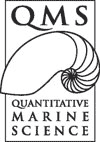
Supervisors
Summary: Retreating sea ice can trigger extensive accumulations of phytoplankton biomass (blooms) in spring and summer, by stratifying the surface ocean and releasing sea ice algae and nutrients. This is one of the classic ocean examples of light and nutrients occurring in the same place at the same time to stimulate ocean productivity. Other prominent examples include the temperate spring blooms like the North Atlantic, and coastal upwelling systems. These high productivity events are sites of significant carbon uptake and potential export to sediments, and they are ecological hotspots of enormous ecological and economic importance.
Around Antarctica, ice edge blooms are temporally and spatially patchy and ephemeral. Their physical and biological drivers remain unclear. The objective of this project is to quantify the importance of several different processes in triggering ice edge phytoplankton blooms. The project will use a combination of satellite observations and model output to determine when and where ice edge blooms occur, how variable they are, and the physical drivers of that variability.
Essential skills/experience:
Desirable skills/experience: